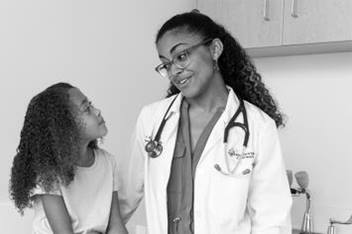Ovarian Cyst

Children born female have an ovary on each side of the lower belly (Picture 1). Ovarian cysts are small sacs filled with fluid that form on or inside an ovary. A functional ovarian cyst is normal and is not related to illness. Ovaries release an egg into your fallopian tubes each month. This is called ovulation. Many functional ovarian cysts are formed during or after ovulation. They’re usually harmless and go away on their own.
Causes
Functional ovarian cysts can happen when:
- The sac that held the egg didn’t dissolve.
- The egg doesn’t leave the sac in the ovary.
- The sac closes before dissolving the egg.

Signs and Symptoms
Functional cysts rarely cause symptoms. However, some symptoms can happen suddenly and be severe. Call your doctor or health care provider if you have:
- Aching or sudden, sharp belly pain.
- Nausea, throwing up (vomiting), or not being as hungry (loss of appetite).
- Bloating or feeling like your belly is full.
- Dizziness when standing up from sitting.
- Very heavy vaginal bleeding that can happen any time, not just on your period.
- Changes in the timing of your period.
- Weight gain.
- Pain during or after sex in your lower belly.
- Changes with bowel movements like cramping or diarrhea.
- Been peeing more often.
Diagnosis
Your doctor or health care provider will do these things to diagnose ovarian cysts:
- A pelvic exam to check for swelling on an ovary.
- Order blood tests.
- Get imaging tests, like an ultrasound, magnetic resonance image (MRI), or computer typography (CT scan).
- Schedule a laparoscopy if they think the cyst won’t go away on its own, is bleeding, or is twisted.
Problems and Complications
- Bursting or rupturing of a cyst: Sometimes a cyst can get large and burst (rupture). If this happens, the fluid and blood from the cyst goes into the belly (abdomen). This can be life-threatening.
- Ovarian torsion: Bigger cysts can twist around ligaments around the ovaries. This can cause ovarian torsion, blocking blood flow to the ovary. This can cause damage and be dangerous.
Treating Ovarian Cyst and Torsion
The specialty of Pediatric and Adolescent Gynecology expertly cares for children with ovarian cyst and torsion.
Treatment
Treatment will depend on the type and size of your cysts and your symptoms. Your doctor or health care provider may recommend one or more of the following:
- Waiting until you’ve had 1 to 2 periods to see if the cyst goes away on its own.
- Over-the-counter (OTC) medicine, like acetaminophen (Tylenol®) or ibuprofen (Motrin® or Advil®), for pain. Read the label to know the right dose to take.
- Using a heating pad or taking a warm bath for pain.
- Avoiding intense activity that may cause ovarian torsion.
- Starting birth control to stop ovulation. Birth control may prevent new cysts from forming.
Surgery
-
Sometimes surgery is needed to remove large cysts or cysts that have burst or fix an ovarian torsion. Surgery doesn’t prevent new cysts from forming. Types of surgery are:
- Cystectomy: Remove the cyst without removing the ovary.
- Oophorectomy: Remove the cyst and the ovary.
- Salpingo-oophorectomy: Remove the cyst, ovary, and fallopian tube.
When to Call the Doctor
Call your doctor or health care provider if you:
- Have a fever over 101° Fahrenheit, or 38.3° Celsius (C).
- Had surgery and there is redness or drainage from the surgical site.
- Have pain that doesn’t go away.
When to Call 911
Call 911 for emergency help if you:
- Have severe symptoms, like belly pain, vomiting, or dizziness, that start suddenly. This may be a medical emergency.
- Have heavy vaginal bleeding at any time, not just on your period.
Ovarian Cysts and Torsion (PDF)
HH-I-425 • ©2016, revised 2023 • Nationwide Children's Hospital



